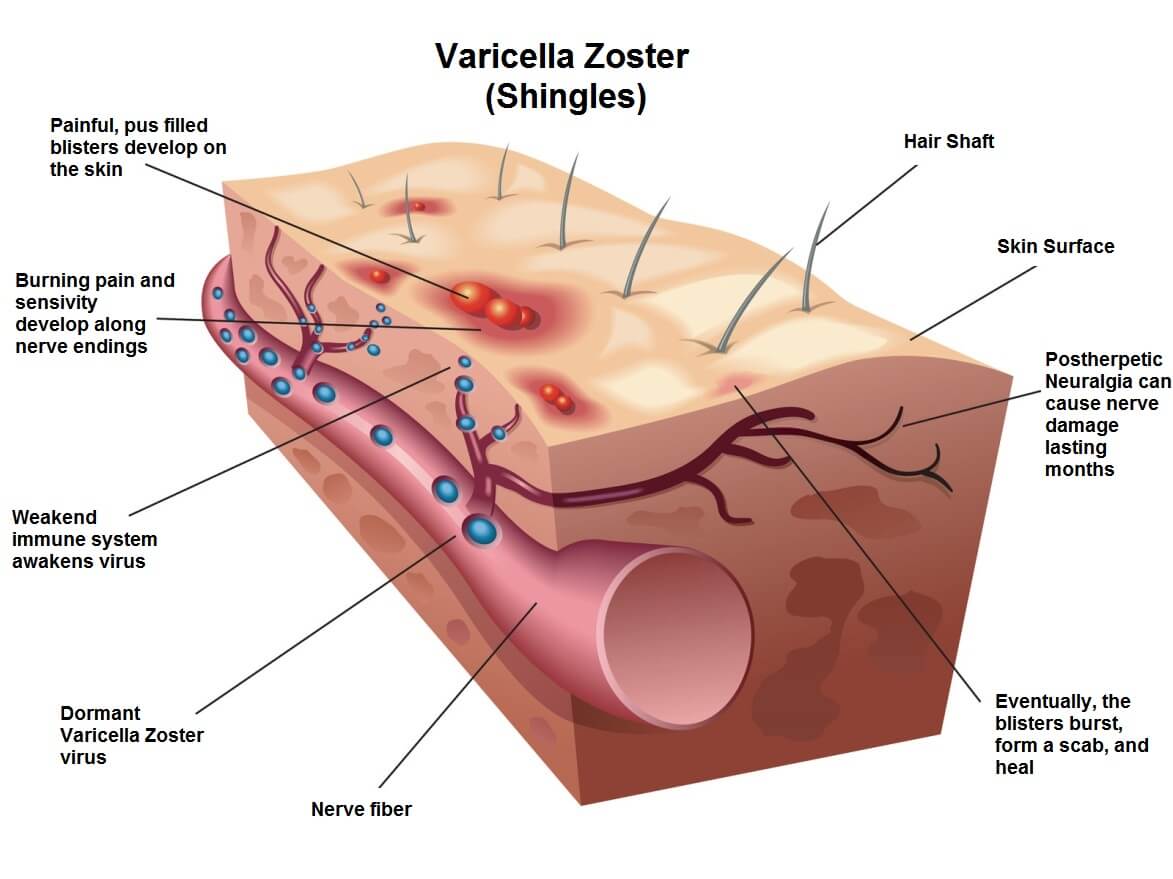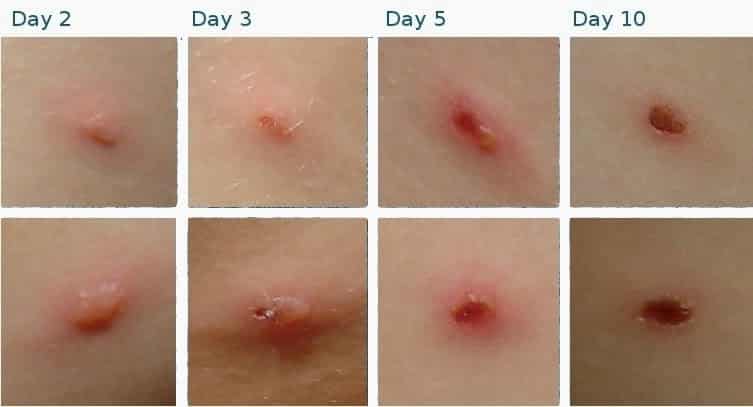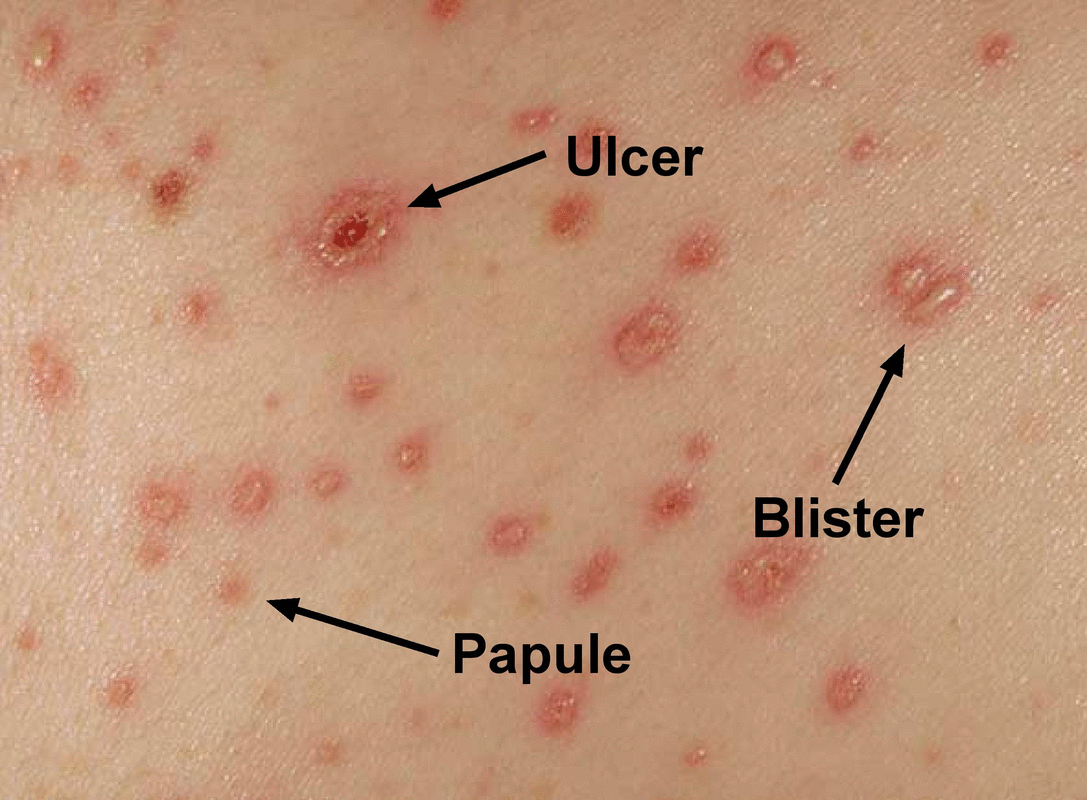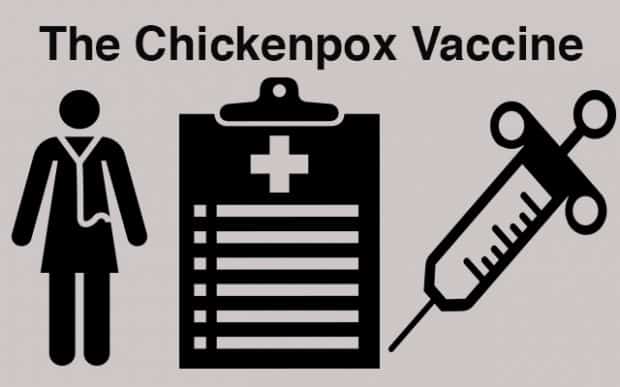Itchy, red blisters all over the body. That’s how chickenpox can be characterized as at a glance.
Chickenpox remains one of the most recognizable diseases that people can be affected by, especially during childhood. There was a time when it was considered common and deemed as a necessary (and in most cases, unavoidable) part of childhood to have chickenpox.
Also known as varicella, chickenpox usually occurs only once in a person’s life. During the middle of the 1990s, the first chickenpox vaccine was developed. Since then, the cases of chickenpox infection have declined.
Lets take a look at chickenpox in detail, how its caused, how it can be treated and in an ideal case, altogether avoided by people.
Causes of Chickenpox
The varicella-zoster virus is the cause of varicella (chickenpox) infection. Usually the infection is transmitted very quickly when a patient is infected with the virus. Friends and family members usually catch the virus when one member of the group is infected.
A person becomes contagious a few days before any prominent symptoms are seen. The infection transmits to other people through saliva, coughs, sneezes, and through contact with red blisters.
Who is at risk of getting infected?
Anyone with a history of a previous chickenpox infection, vaccine-induced immunity, or immunity received by a newborn baby from its mother are at low risk of getting infected by the virus.
You are at risk of developing chickenpox if you:
- have been in contact with an infected person,
- you are a child under 12 years of age,
- your immune system is not functioning properly due to medication or sickness.
That is not to say that adults don’t suffer from chickenpox. They can also contract it if they come into contact with infected individuals and have no prior history of getting chickenpox in their early years.
Symptoms
The itchy rash is the most prominent indicator of chickenpox infection. Other symptoms are experienced prior to the development of the rash, and the person becomes contagious. These symptoms include fever, headache, and loss of appetite.
The rash starts developing after 2-3 days of the above-mentioned symptoms. The infection has a hierarchy of events which must be carried out before the body recovers completely:
- At first, red and pink bumps appear all over the victim’s body.
- After some time, these bumps start leaking a fluid.
- Lastly, the bumps scab over and start disappearing gradually.
The bumps do not all appear at the same time, nor are all of the bumps in the same stage at a time. Each bump goes through its three stages separately depending on the time when it appeared. The patient is contagious till the last bump is done leaking and scabs over.
Diagnosis
It is of utmost importance that you make your doctor aware if you have even a vague suspicion that you might have come in contact with chickenpox. This goes for pregnant women as well.
In normal cases, unexplained headaches, feeling feverish, and not feeling hungry even after not eating for long intervals is alarming enough to consult your doctor. Development of any unexplained rash should not be taken lightly, and in those cases, you need to contact your doctor immediately.
Chickenpox infection can usually be diagnosed by physical observation and evaluation of blisters that develop on the patient’s body. Lab tests will provide the diagnosis if a viable diagnosis cannot be made by physical exam.
Alarming factors
It’s important that you contact your doctor immediately if the rash is spreading to your eyes or if it’s getting tender and warm. If you feel dizzy all the time or experience shortness of breath, contact your doctor and inform them of the problem.
These complications affect infants, elderly patients, people with a weak immune system, and pregnant women. These groups can also be face skin infections, arthritis, transient synovitis, and lung infection.
Pregnant women infected by chickenpox may potentially bear children who suffer from birth effects such as poor growth, eyesight issues, weaker intellect, and even small head size.
Treatment
The first order of treatment for chickenpox infection is to prevent the patient from going to public places like schools or day care facilities. This is essential in controlling the spread of chickenpox. The symptoms are managed while the virus loses its hold over the system and the blisters start scabbing over.
If you suffer from itches brought about by chickenpox, you can:
- take lukewarm baths,
- apply unscented lotion,
- use soft lightweight clothes,
- get antihistamine medication or topical ointments
These steps can help you calm down the itchy feeling.
Those who experience complications during the infection are prescribed antiviral drugs. Antiviral drugs reduce the intensity of symptoms experienced during the infection, which speeds up the healing process. The complete cycle of the infection takes no more than 2 weeks to complete, and the patient returns to their former health.
The virus becomes dormant and stays in the body once the infection is healed, making the patient immune to another span of chickenpox cycle in the future. Although in adults, due to advanced age or sickness, the varicella-zoster virus may reactivate in the form of shingles.
Prevention
90% of the children who are subject to vaccine-induced immunity from chickenpox are protected from the virus. The vaccine should be given while the children are between 12-15 months of age.
An immunity booster is given when the child reaches 4 years of age. Catch-up doses of the chickenpox vaccine are available for older children who haven’t been infected by chicken pox and haven’t received the vaccine either.
The infection is more severe in patients who are infected during adulthood.































The one i know in Punjabi (Lakra Kakra) is same as chickenpox?
yes